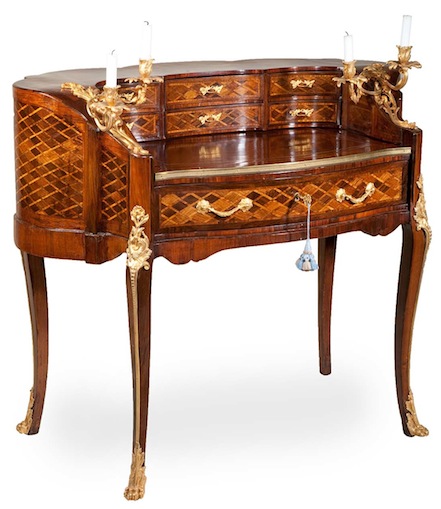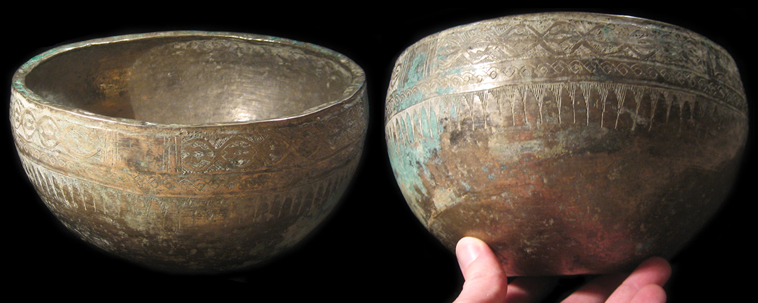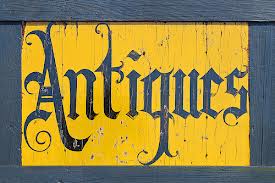Furniture can be dated by studying nails and screws. Furniture predating 1790 will include “rose-head nails,” that were hand-forged by blacksmiths. These nails can be identified by their irregular, rose-shaped heads. “Square-head nails,” employed from 1790 to 1830, were machine cut and finished off by a blacksmith who squared the heads. From 1830 to 1890 cabinetmakers used headless “machine-cut nails, that are tapered and rectilinear in shape. Modern “brad” and “penny” nails were introduced around 1890. Screws were occasionally used in furniture pre-dating the beginning of the machine era (Circa 1830). Blacksmith forged examples can be identified by inspecting for thin and slightly off-centered slots and off-round heads.
The “circular saw” invented in the 18th century, did not come into wide usage until after 1830. Thus, boards displaying “circular saw marks” will not be found on furniture pre-dating the “Empire Period” (1830-1850). Unfinished pre-1830 boards cut from vertical motion “ripsaws” will often display small, somewhat parallel, saw lines.
Prior to the introduction of power driven woodworking machinery in the mid 19th century, lumber was worked by hand. After hand-sawing, cabinet makers dressed their boards with a jack plane and draw knives. On authentic furnishings pre-dating the “Victorian Period,” (1850-1910) unfinished non-visible “secondary” surfaces like backboards and drawer bottoms will show evidence of “hand-planed” by feeling for subtle undulating rows in the wood.
Small wooden pins known as dowels can be helpful in authenticating age. Machine era pins will be perfectly circular and flush to the surface. Antique dowels are non-round and will protrude slightly from the surface because of shrinkage in the wood they are securing.
Wood shrinks in a direction opposite the grain. The degree is determined by softness of the lumber, age, and environment. Therefore, authentic antique furniture can be discerned by inspecting for evidence of: gapping between boards, shrinkage cracking, buckling veneer, protruding pegs and breadboard ends, and legs extending slightly beyond the frame or “skirt.” Early circular tabletops will measure somewhat oval, 1/8″ to 1/2″ longer in the direction of the grain.
Outline and thickness on early hand-wrought iron and brass hinges will be non-uniform.
The top rail on early 19th century chairs will be joined with non-round tenons that can be viewed by slightly pulling the yoke from the stile. Circular dowels are evidence of “non-period” chairs.
Visible surface planks (primary wood) on genuine antique furniture will be wide, varying in thickness, and relatively free of blemishes. Knotty pine was not employed by earlier cabinetmakers.
Although it has been stripped and refinished back to the original wood, much old-time non-mahogany furniture was originally painted. Analysis of wood pores and fissures with a jeweller’s loop will often show several layers of paint residue. This paint history can help authentic a piece and determine whether individual components suchg as the feet, the top, etc.are original or undesirable replacements.
Don’t refinish quality antiques in old or original surface unless advised to do so by experts.
Three reasons:
- In some cases, the colouration is truer to original intent. A mahogany-like pigmented finish was often applied to cherry, maple, and other native woods by American cabinetmakers trying to upgrade the look of their wares. Tiffany and other artisans commonly “antiqued” bronze and other metals used in lamps and other products.
- Grungy untouched paint, varnish, and oxidation is considered beautiful by many of today’s top curators and collectors.
- Un-refinished surface is a valuable clue in determining antique integrity. Be it painting, paper, metal, textile, or wood; one of the biggest challenges for fakers and restorers is mimicking old surface. Undeniable integrity heightens price.




















